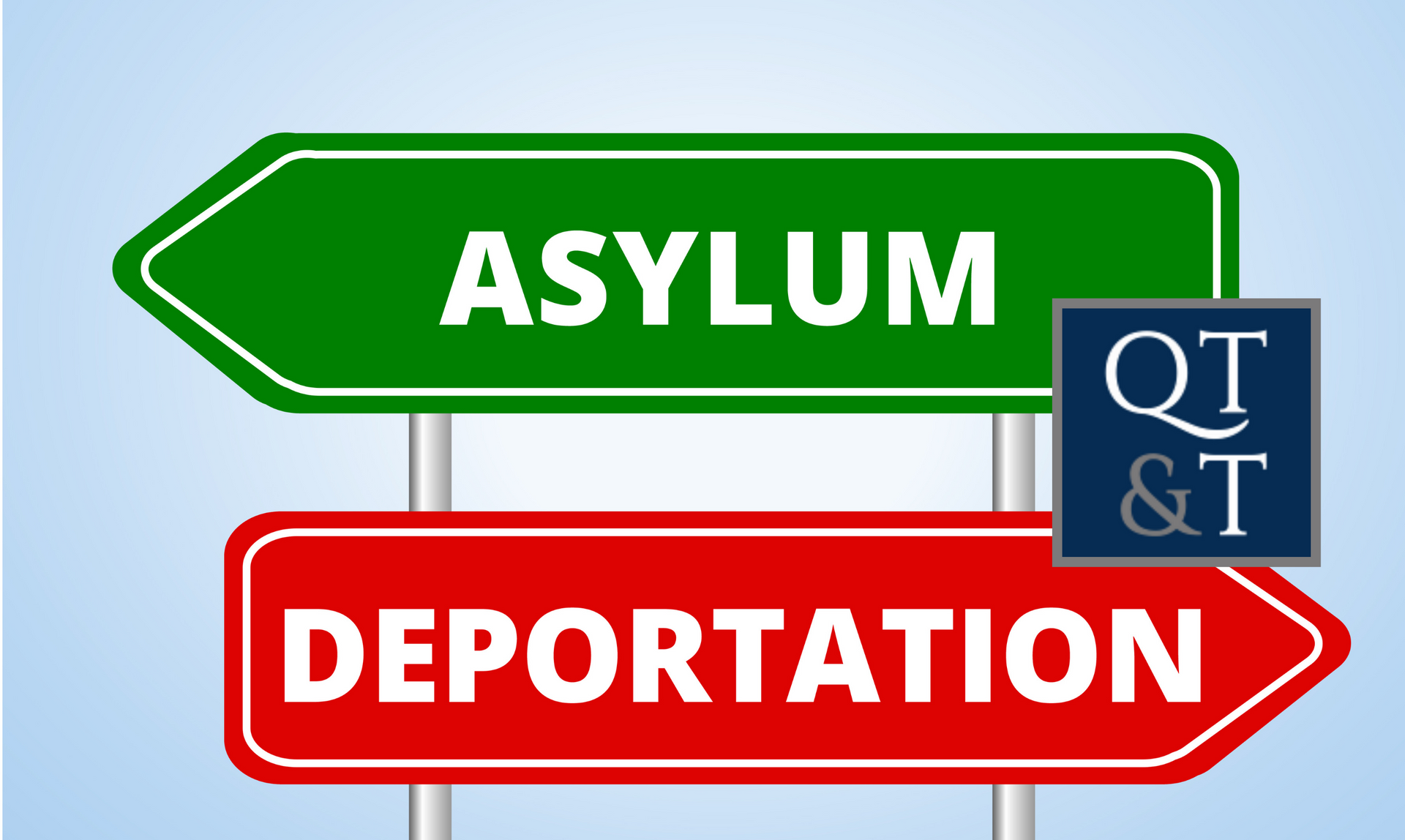🗣️ Fluent in English, Spanish & Portuguese 🌍
Immigrate to the US as a Doctor: A Guide for International Physicians
Navigating the complex path to practicing medicine in the United States as an international physician is both challenging and rewarding. This guide provides a detailed overview of the requirements and steps international physicians must follow to successfully establish their medical practice in the U.S.

Educational and Professional Credentials
Degree Verification
The process begins with the verification of your medical degree. This involves confirming that your degree from a foreign medical school meets U.S. standards, typically evaluated by organizations like the Educational Commission for Foreign Medical Graduates (ECFMG).
Licensure
Possessing a valid medical license in your home country, clear of any disciplinary actions, is crucial. This attests to your legal and ethical standing in the medical profession.
English Proficiency
Fluency in English is essential. Physicians must demonstrate their language proficiency through exams like the TOEFL or IELTS, ensuring they can effectively communicate in a healthcare setting.
United States Medical Licensing Examination (USMLE)
Passing the USMLE, a comprehensive three-step examination, is essential for practicing in the U.S. It evaluates your medical knowledge and clinical skills.
Residency
Completing a residency program in the U.S. is required, even if you have completed one in another country. This provides crucial hands-on experience in the American medical system.
Work Visa
Finally, securing a work visa, usually sponsored by a U.S. hospital or health institution, allows you to practice within the country.
Enhancing Your Application
Clinical Experience
Prior clinical experience, whether in your home country or internationally, is invaluable. It not only enhances your skills but also aids in adapting to the clinical practices prevalent in the U.S.
Continuing Education
Keeping updated with the latest medical advancements through continuing education is crucial for integrating cutting-edge practices into your work.
Soft Skills
Skills such as communication, teamwork, and patient management are indispensable. These facilitate smooth integration into the U.S. healthcare environment and improve the quality of patient care.
Steps to U.S. Licensure and Practice:
- Educational Recognition: Start by getting your medical degree recognized as equivalent to a degree from a U.S. medical school.
- Gaining Experience: Gain clinical experience to enhance your practical skills and understanding of medical care.
- USMLE Preparation and Success: Prepare for and pass all three steps of the USMLE.
- State Licensure: Each state has its own licensure requirements. Ensure compliance with the state where you plan to practice.
- Employment: Secure a job offer from a U.S. healthcare provider, necessary for your visa application.
- Visa Application: Apply for the appropriate work visa based on your qualifications and job offer.
- Relocation Preparation: Prepare for your move to the U.S., including housing and healthcare arrangements.
Visa Options and Career Advancement
- Explore various visa categories suitable for physicians, such as the H-1B, O-1, or EB-1 visas, based on your qualifications and job offer.
- Advance your career by pursuing fellowships, engaging in research, and contributing to medical publications.
Conclusion
The journey to practicing medicine in the U.S. as an international physician involves meeting stringent criteria and enhancing your application with relevant experiences and skills. By navigating these requirements effectively, you can embark on a fulfilling career in the U.S. healthcare system, significantly impacting the health and well-being of its diverse population.

By Jonathan Amador
•
22 Apr, 2024
Unlock the EB-2 NIW Visa process with our comprehensive guide! From eligibility criteria to application steps, understand how this visa category can benefit you. Ready to pursue your American dream? Let's navigate this journey together. #EB2NIW #USVisa #ImmigrationGuide"

By Jonathan Amador
•
18 Mar, 2024
Dive into the legal complexities of Miguel-Peña, et al. v. Garland (2024), where Wendy Carolina Miguel-Peña and her daughter challenge their removal proceedings and asylum application denial. Unravel the arguments, court analysis, and implications, shedding light on procedural requirements, asylum criteria, and the intricate dynamics of immigration law in the United States.

By Jonathan Amador
•
18 Mar, 2024
Explore the legal intricacies of Edwards v. Attorney General (2024), where Karastan L. Edwards challenges the classification of his conviction as an aggravated felony impacting his immigration status. Delve into the arguments, court analysis, and implications of this pivotal case, shedding light on the complex interplay between state court modifications and federal immigration law.

By Jonathan Amador
•
22 Feb, 2024
The E-2 Treaty Investor Visa offers a unique opportunity for individuals from treaty countries to invest in and operate businesses within the United States. However, complexities arise when the approved passport of an E-2 visa applicant or their dependents belongs to a country that does not have a treaty agreement with the U.S. This situation presents a unique set of challenges and considerations for potential investors and their families.

By Jonathan Amador
•
22 Feb, 2024
The H-1B Visa: A Gateway for Global Talent in Specialty Occupations The H-1B visa serves as a crucial bridge for highly skilled professionals from across the globe, offering a unique opportunity to contribute their expertise to the U.S. workforce. This visa category encompasses a wide range of specialty occupations, from accountants and attorneys to software engineers and medical workers, and even extends to distinguished fashion models, showcasing the diversity of talent it attracts. Understanding the H-1B Visa The H-1B visa is designed for temporary nonimmigrant workers in fields that demand a high level of specialized knowledge, typically requiring at least a bachelor's degree or its foreign equivalent. Unique among work visas, it also accommodates distinguished fashion models, highlighting its broad scope. The Distinction of H-1B Status Holding an H-1B visa status is distinct from merely having the visa stamp in one's passport. The status confers the right to work in the U.S. in a specialized role, initially granted for up to three years and renewable in increments up to a total maximum of six years. For those seeking to extend their journey beyond this tenure, transitioning to an employment-based green card is a viable path. Meeting the H-1B Requirements To qualify for an H-1B visa, candidates must secure a job offer from a U.S. employer in a specialty occupation that matches their educational and professional background. The role must offer prevailing wages and meet the educational criteria, typically a U.S. bachelor's degree or equivalent. Selection in the H-1B visa lottery is a critical step for those subject to the annual cap, marking the beginning of their application journey. Sponsorship: The Employer's Role H1B sponsorship is a pivotal process that allows U.S. companies to bring foreign professionals to the United States for temporary work in specialty occupations. The responsibility of filing the H-1B visa petition with USCIS lies with the U.S. employer. Successful approval of the petition ushers in the employer's duty to ensure the H-1B employee is accorded the same job benefits as their counterparts, including bonuses, health benefits, and other employment perks, thereby maintaining equity within the workplace. The Application Process: A Step-by-Step Overview The application process for an H-1B visa involves meticulous preparation, starting with the employer filing a Labor Condition Application (LCA) with the Department of Labor (DOL) for certification. Following certification, the employer assembles an H-1B petition, including Form I-129, the certified LCA, and a comprehensive package of supporting documents, such as proof of the candidate's qualifications and details of the job offer. For candidates outside the U.S. or those changing status, obtaining an H-1B visa stamp through consular processing is the next step. This involves completing Form DS-160, paying the visa application fee, and attending an interview at a U.S. consulate or embassy, armed with the necessary documentation, including the I-797 H-1B approval notice and a valid passport. Extension and Renewal: Ensuring Continuity For H-1B workers seeking to extend their stay beyond the initial authorization, the renewal process mirrors the initial application. Employers must initiate this process well in advance of the visa's expiration, filing a new I-129 petition with USCIS to extend the candidate's H-1B status, thereby ensuring uninterrupted employment in their specialty occupation. As the landscape of work continues to evolve, the H-1B visa remains a pivotal pathway for professionals seeking to leverage their specialized skills on the global stage, embodying the spirit of collaboration and growth that defines the modern workforce.
CONTACT US
950 S. Winter Park Dr., Suite 207
Casselberry, FL 32707
PRACTICE AREAS






